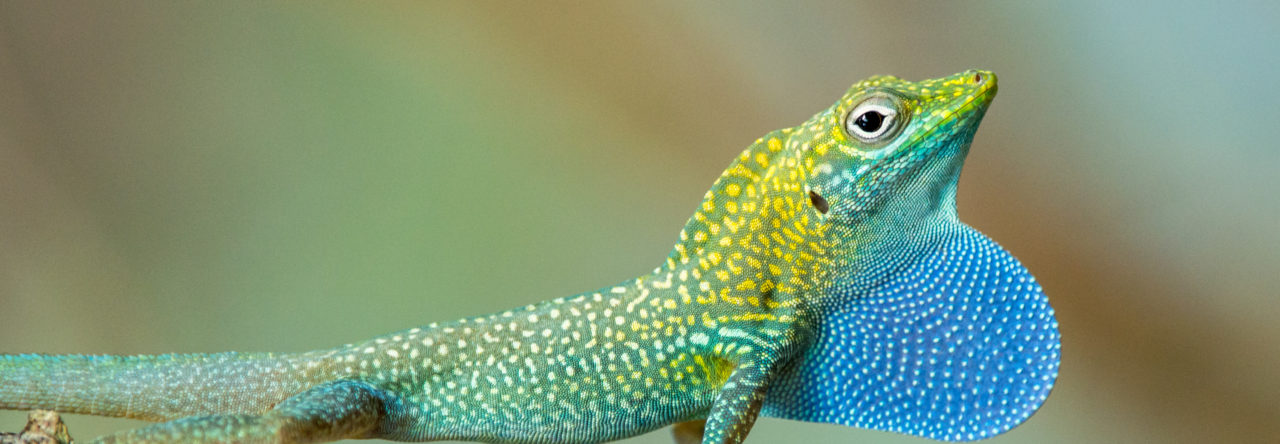We all know that habitat fragmentation and destruction have devastating consequences on biodiversity. Yet, one of the reasons that Caribbean anoles have been so intensively studied is that some species do extremely well in human-disturbed habitats and, because they have become so ubiquitous, they are extremely good subjects for ecological and behavioral studies.
In fact, it gives pause to realize that Caribbean islands were mostly cloaked in forest before the arrival of man, and thus many of the common anole species which are abundant in open, disturbed habitats–brown anoles, for example–were probably much less abundant in pre-historic times. In other words, it seems likely that some species are actually doing better today than in the past, but there are very few relevant data.
Anolis (Phenacosaurus) heterodermus probably occurs at higher altitudes than any other anole and has a very large altitudinal range. It’s natural history is almost unknown, and until recently, nothing had been published on its ecology and behavior since Miyata’s J. Herp. paper 30 years ago. However, that has now changed. Rafael A. Moreno-Arias has just completed his master’s degree at Universidad Nacional de Colombia on populations of this species near Bogotá, and the first paper from this work was recently published in Biotropica.
In that paper, Moreno looked at six habitat patches, differing in size and degree of fragmentation. By conducting a mark-recapture study, he found that populations seemed to be increasing in all populations. Moreover, survival and growth rates were calculated to be highest in the most disturbed habitats, perhaps reflecting this species’ adaptation to edge habitats. Although too much habitat destruction is obviously detrimental–without any bushes, the species will not be able to survive–it seems that the species, perhaps like its Caribbean cousins, does just fine in fragmented landscapes. However, Moreno and Urbina-Cardona take a different, more nuanced, view on their findings, as their abstract below indicates.
Abstract:
Habitat fragmentation and loss affect population stability and demographic processes, increasing the extinction risk of species. We studied Anolis heterodermus populations inhabiting large and small Andean scrubland patches in three fragmented landscapes in the Sabana de Bogotá (Colombia) to determine the effect of habitat fragmentation and loss on population dynamics. We used the capture-mark-recapture method and multistate models to estimate vital rates for each population. We estimated growth population rate and the most important processes that affect k by elasticity analysis of vital rates. We tested the effects of habitat fragmentation and loss on vital rates of lizard populations. All six isolated populations showed a positive or an equilibrium growth rate (k = 1), and the most important demographic process affecting k was the growth to first reproduction. Populations from landscapes with less scrubland natural cover showed higher stasis of young adults. Populations in highly fragmented landscapes showed highest juvenile survival and growth population rates. Independent of the landscape’s habitat configuration and connectivity, populations from larger scrubland patches showed low adult survivorship, but high transition rates. Populations varied from a slow strategy with low growth and delayed maturation in smaller patches to a fast strategy with high growth and early maturation in large patches. This variation was congruent with the fast-slow continuum hypothesis and has serious implications for Andean lizard conservation and management strategies. We suggest that more stable lizard populations will be maintained if different management strategies are adopted according to patch area and habitat structure.
- Evolution in Real Time on Lizard Island - March 23, 2025
- Spider Snags Adult Anolis osa - March 22, 2025
- An Homage to the Green Anoles of New Orleans - March 21, 2025




Leave a Reply